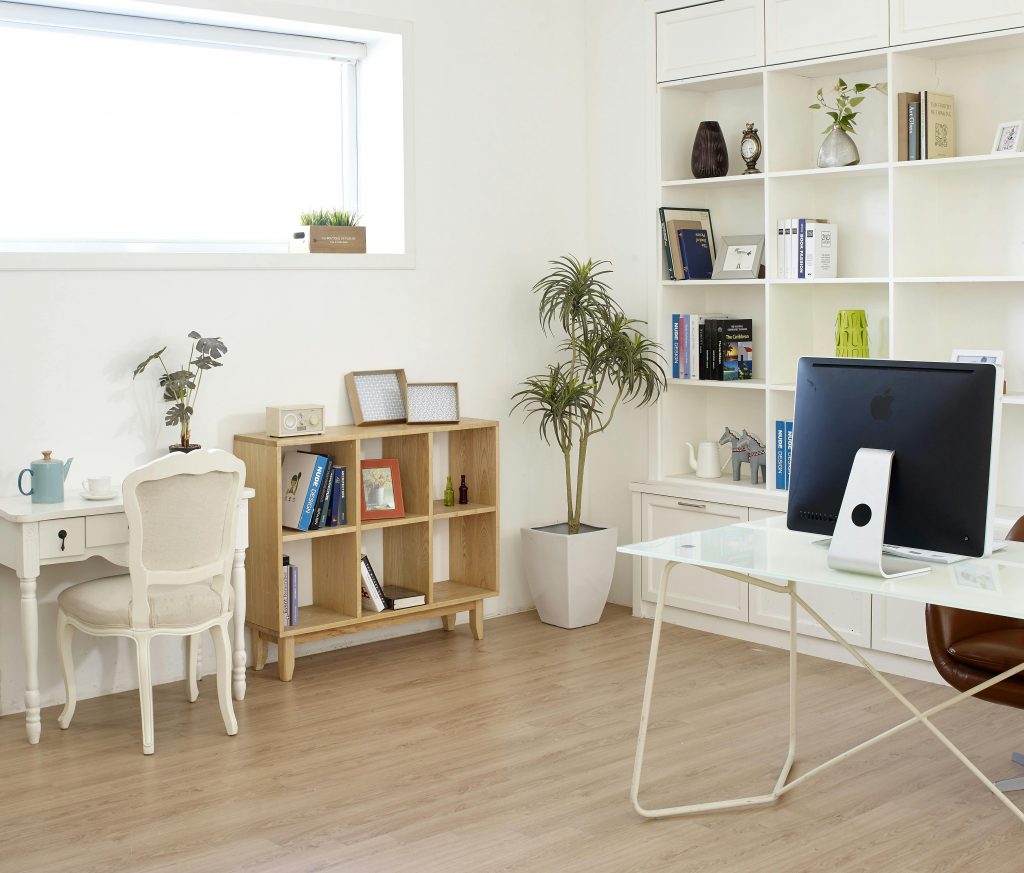Key Takeaways:
- Built-ins optimize space, storage, and style while creating a modern focal point.
- Plan carefully: measure accurately, choose materials wisely, and define storage needs.
- Balance aesthetics with functionality through smart design and layout.
- Preparation and proper assembly ensure a sturdy, polished result.
- Styling and finishing touches personalize the shelves and enhance your office atmosphere.
- Regular maintenance keeps your DIY built-ins looking and functioning like new.
Creating a functional and stylish home office is a dream for many homeowners. One of the most impactful ways to elevate your office space is by adding DIY built-in bookshelves. Not only do they provide storage, but they also act as a design focal point that can completely transform your work environment. In this guide, we’ll break down how to design modern DIY built-in bookshelves for your home office, covering everything from planning to styling, assembly, and finishing touches.
Why Choose DIY Built In Bookshelves?
Built-in bookshelves have a timeless appeal. Unlike standalone shelving units, built-ins are customized to fit your space perfectly. Here’s why you might consider DIY built-ins for your home office:
- Maximized Space: Use every inch of wall space efficiently.
- Custom Fit: Tailor the height, depth, and width to suit your office needs.
- Design Cohesion: Built-ins can seamlessly match your home office style.
- Durability: Properly constructed built-ins last longer than pre-made furniture.
- Creative Flexibility: Incorporate hidden storage, lighting, or unique shelving shapes.
How Do You Start Planning a DIY Built-In Bookshelf?

Before you pick up a saw or buy materials, planning is crucial. Follow these steps to ensure your bookshelf is both functional and stylish.
Assess Your Space
Measure the wall where your bookshelf will go. Consider:
- Wall height and width, including molding or baseboards
- Proximity to windows, doors, or electrical outlets
- Ceiling slopes or any irregularities
It’s wise to leave a small allowance for uneven walls—subtracting a small amount from your measurements ensures the shelves will fit snugly without forcing them into place.
Define Your Storage Needs
Think about what you plan to store on your shelves. Options include:
- Books of varying sizes
- Office supplies and stationery
- Decorative items, photos, or art pieces
- Electronics or tech accessories
Choose a Style
Modern design is often defined by clean lines, simplicity, and functional elegance. Decide on:
- Minimalist: Simple shelves with no ornamentation
- Geometric: Asymmetrical layouts or varying shelf heights
- Industrial: Metal brackets combined with wood
- Scandinavian: Light wood tones with functional simplicity
Consider Materials
High-quality materials ensure durability and a polished look. Options include:
- Plywood: Strong and smooth for painting
- Solid Wood: Offers a premium, lasting finish
- MDF: Budget-friendly with easy painting surfaces
- Metal Accents: For a modern industrial feel
How Do You Design a Modern Layout?
A modern bookshelf isn’t just about function—it’s also about visual appeal. Keep these principles in mind:
- Balance Open and Closed Spaces: Mix shelves with cabinets or drawers to reduce clutter.
- Vary Shelf Heights: Accommodate different items while creating visual interest.
- Use Negative Space: Empty sections help the shelves feel airy and modern.
- Include Built-In Lighting: LED strips under shelves enhance the modern aesthetic and improve visibility.
How to Prepare the Space for Installation
Before building, preparing the area properly is essential for a smooth process:
- Clear the Area: Move furniture and cover the floors with drop cloths.
- Remove Existing Trim: Carefully take out molding or baseboards to allow the shelves to sit flush against the wall.
- Locate Wall Studs: Mark stud positions to securely anchor the shelves.
- Double-Check Measurements: Ensure all cuts will fit precisely, accounting for any irregularities in walls or corners.
How Do You Build the Shelves Step by Step?
Once planning and preparation are complete, it’s time to learn how to build a bookshelf in your home office. Follow these steps to create a sturdy, professional-looking unit:
- Cut the Wood: Trim boards to the correct height and width for side panels and shelves, including face plates.
- Assemble the Frame: Attach horizontal shelves to vertical side panels using wood glue, screws, and nails. Make sure each shelf is level and properly reinforced.
- Attach the Back Panel: Secure a plywood back to the unit for stability, using glue and nails.
- Add Face Plates: Attach 1×2 boards along the front edges of the shelves and sides to create a finished look.
- Position the Unit: Slide the assembled bookshelf into place and anchor it to wall studs with screws.
- Install Trim: Add molding or trim that matches your existing decor for a seamless appearance.
- Paint or Stain: Finish with your choice of paint or stain to match your office style.
How Can You Style Your DIY Built In Bookshelves?
Styling your shelves is where functionality meets personality. Consider these tips:
- Color Code Your Books: Organize by color for a clean, cohesive look.
- Mix Decorative Items: Add plants, vases, or sculptures to break up rows of books.
- Incorporate Storage Bins: Use boxes or baskets for smaller items while keeping the shelves modern.
- Rotate Displays: Refresh your decor seasonally or when you acquire new items.
How Can You Make a Small Office Look Bigger?
Even in compact offices, built-ins can enhance the feeling of space:
- Light Colors: Reflect light and keep the room feeling airy.
- Glass Cabinet Doors: Reduce visual heaviness while protecting items from dust.
- Leave Some Open Space: Avoid overcrowding shelves.
- Use Vertical Space: Tall units draw the eye upward, making the room feel larger.
How to Incorporate Technology
Modern home offices often rely on tech. Here’s how to integrate it seamlessly:
- Cable Management: Build channels or hidden compartments to keep cords tidy.
- Charging Stations: Dedicate a shelf for charging devices.
- Integrated Desks: Combine shelving with a workspace surface for efficiency.
- Smart Lighting: Install LED strips with adjustable brightness for a functional, modern look.
How to Avoid Common DIY Mistakes
Even experienced DIYers can stumble. Watch for these pitfalls:
- Skipping Measurements: Always measure twice and cut once.
- Ignoring Wall Studs: Shelves anchored only to drywall may sag or collapse.
- Overcomplicating Designs: Simple, clean lines often look more modern than intricate layouts.
- Rushing Finishes: Take your time painting or staining for professional results.
- Neglecting Lighting: Proper lighting highlights your shelves and enhances usability.
Tips for a Smooth Installation
To make the process easier and reduce frustration:
- Pre-assemble smaller sections of the bookshelf before moving them into position.
- Use clamps to hold pieces steady while fastening them.
- Keep extra wood and hardware on hand for adjustments or mistakes.
- Enlist help for lifting larger panels to avoid injury or damage.
Can DIY Built In Bookshelves Increase Home Value?
A well-designed built-in unit is more than just storage—it’s an investment:
- Custom Appeal: Buyers appreciate tailored, high-quality features.
- Functional Storage: Extra storage is always a selling point.
- Visual Impact: A stylish built-in can elevate the look of the entire office.
- Durability: Long-lasting craftsmanship signals a well-maintained home.
Closing Thoughts
Designing and installing modern DIY built-in bookshelves for your home office is a rewarding project that combines creativity, functionality, and style. By carefully planning your space, selecting the right materials, and following a step-by-step assembly process, you can create a durable and visually striking focal point that enhances both organization and aesthetics. Beyond storage, well-designed built-ins can make a small office feel larger, streamline your workflow, and even add value to your home.
With thoughtful styling, proper lighting, and regular maintenance, your custom shelves will serve as a practical and elegant centerpiece for years to come—turning your home office into a space that is truly inspiring and uniquely yours.

